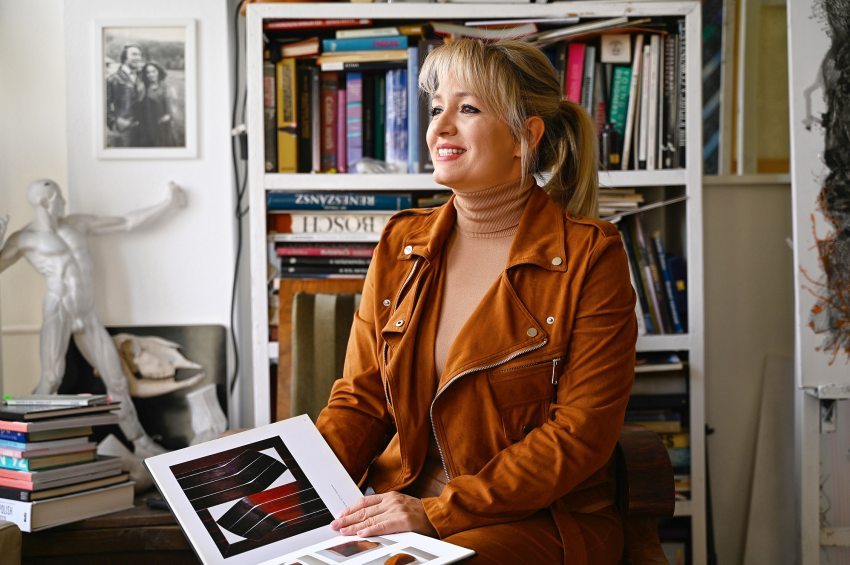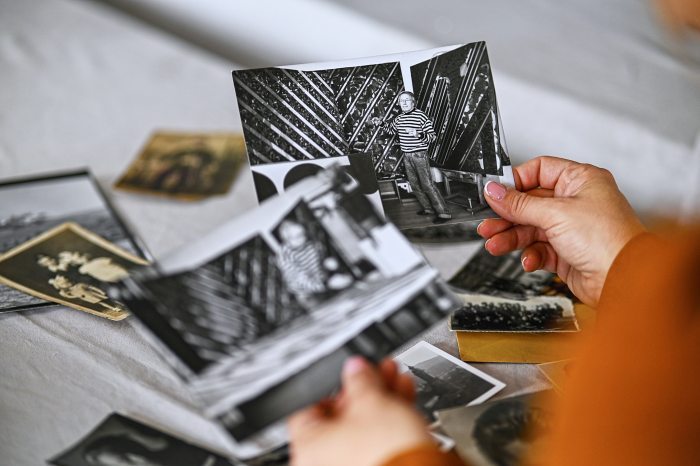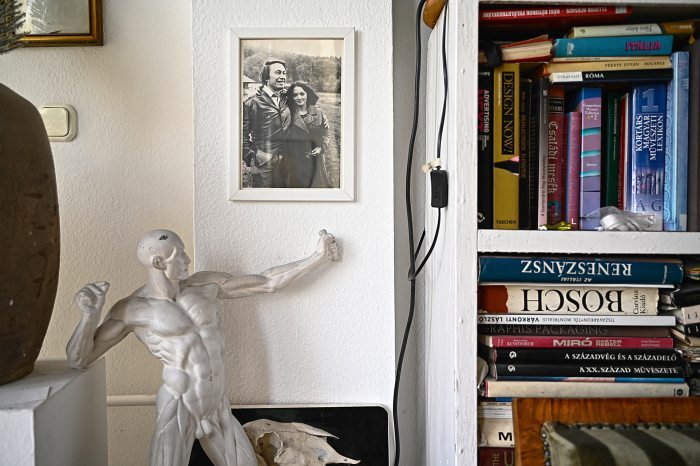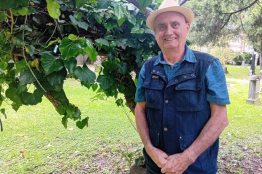"My father became a hero twice" – The Baska family’s story speaks to hundreds of thousands
After the Second World War, between 1945 and 1949, around 120,000 Hungarians in Czechoslovakia were deported or driven out of their homeland under the Beneš decrees, which aimed to exchange the Hungarian and Slovak populations. Only those who declared themselves Slovak were allowed to stay, and those who remained Hungarian were sent to labour camps or forced labour, including the Baska family from Rozsnyó (Rožňava). József Baska, then eleven years old, risked his life to get his three younger brothers out of their home. His daughter Barbara Baska made a documentary about his ordeal.

"Djakuyem peknje! Köszönöm szépen!” (Thank you very much!") – With these four words, the documentary Baska magyarul beszél (‘Baska speaks Hungarian’) begins, which commemorates the tragic story of painter József Baska and his family. These are the words of a young boy who, because he spoke Hungarian at school during break time, received a daily beating from his teacher, which he boldly thanked him for in Hungarian.
His brave stand was a family trait: his parents refused to identify themselves as Slovaks during the census, so they were sent to the north-western borderland of Sudetenland for a labour camp.
To avoid forced labour, they decided to flee. The father and his pregnant wife left home early, leaving the young Joseph to outwit the Slovak police and help his brothers escape. After the family reunited, they set off for Hungary in a wagon in the middle of the night, in huge snow. Joseph left behind not only his homeland, but also his childhood.
Escaping into art
"My father became a hero twice: first as a child, and now as an artist, when he told his story through his paintings, pictures and drawings," says the painter's daughter, Barbara Baska, a graphic designer and film director, who welcomes us to their home, where József Baska once worked.
As a child, his talent as a painter was already apparent: he was impressed by the paintings he saw in Krasznahorka (Krásna Hôrka) Castle and began creating his own works. In the beginning, he drew horses, but the family's escape became so deeply imprinted in him that it became the origin of his art.
In the years of socialism, it was impossible to talk about deportation, so he turned to abstract art, thus revealing the truth to the world. The wheel motif, the dynamics of the images, and the choice of colours all convey the pain of escape.
"Black represents the lie, white the truth", Barbara shows a geometric sculpture consisting of black and white shapes that merge, but the latter is incomplete, as if a piece has been cut out.
As the political situation began to change, he was able to speak openly about the tragedy: in the 90s he wrote about their misery in the columns of Új Magyarország (‘New Hungary’) newspaper. Barbara has recently published his memoirs in book form, which, like the film, is entitled Baska speaks Hungarian.
Telling the story of hundreds of thousands
In her search for her father's truth, Barbara herself took to the wagon and one cold winter day set off for Rozsnyó (Rožňava), where parts of the film were shot. "The wonderful thing about documentary filmmaking is that it's like life, you don't know where it's going to end up, what the final conclusion will be. When I started, the only thing I was sure of was that I would have to go down the same path as my father," she explains. Even though there wasn't much snow, it was still a physically demanding journey on the wagon. She was confronted with a disturbing sight when she reached the Hungarian-Slovakian border. "Today the border stone has an M (for Hungary) and an S (for Slovakia) on it, indicating which country is where, but the story is not that simple: settlements have been cut in two and families torn apart. The truth is 'border-less'," she says.
For the film director, it was striking to be confronted with the fact that Hungarians born in Slovakia are still considered war criminals even today. Although the law is no longer applied, the Beneš decrees have never been revoked.
During the filming, several crew members realized that their own families had been affected by the deportations, and the fragments of stories they had heard before were starting to come together. It was a surprise for Barbara to discover how many people were carrying the same trauma. Since then, she has made it her mission to bring this historical tragedy into the public discourse, as few films and books have been made about the Czechoslovakian deportation, and the people involved do not speak about their pain.
"Although I am telling the story from my father's point of view, it is not just his story: tens of thousands of people fled, and this affected the lives of their children and grandchildren, so it is really hundreds of thousands of people we are talking about."
By recalling the stories of their ancestors, their descendants can better understand their behaviour and thinking.
Pain across generations
The events left a deep impression on all the family members, and they have never been able to get over it. For example, the youngest child, Edit Baska, who her mother carried in her arms at the time, still keeps the 1947 expulsion document written in Slovak, which sealed their fate.
József Baska often recounted his experiences to his children. "I heard the story so many times that it became part of my identity, and it evokes similar painful feelings, as though I had lived it myself," says Barbara. This is why she involves a trauma researcher in the film, too.
József Baska chose painting as his therapy, in which he was followed by Barbara and his brother Balázs, a visual artist. "My father always said that you have to catch the wind in the sail. He did this by turning difficulties into art," she quotes her father. "The key to working through this transgenerational trauma is to understand it, talk about it, and be proud of the courage of our ancestors as they rose from this situation and rebuilt their lives, strictly as Hungarians."
The film director shared the story of the family's expulsion with her own children. She took her two sons with her to the filming locations and they also appear in the film.
For the family, faith was also a source of strength. When the wagon of the fleeing family got stuck in the snowy forest, the father set out to seek help. They feared he would not find his way back at night in the heavy snow, but soon he appeared pulling two oxen. Then they felt the Lord watching over them. This gratitude to God later infused the painter's art.
Arriving wheels
While we talk to Barbara, Jácint, the photographer of Képmás, asks her whether the material will be positive or negative, which will certainly make many people think. After all, the topic is a sad family story and an underlying historical tragedy in which justice has still not been done for those involved. Even today, the European Court of Human Rights is still hearing cases concerning the deprivation of rights at the time. Barbara wants the film and the book to be a kind of reparation for all the Hungarian people who were humiliated and forced to flee; by sharing their story with others, her soul will find peace.
She believes that over the years her father has also managed to come to terms with the family's expulsion. In his series The Wagon Falling Apart, he depicted the iconic wagon wheels falling apart, expressing that if there is nothing to go forward on, it is arrival itself. He painted this picture after he was made an honorary citizen of Rozsnyó, where he later founded an art colony, fifty years after the family had fled. One of his later paintings was called The Festive Wagon.
"Finally, he did not have to go into hiding, but returned, speaking Hungarian, embracing his nationality and his artistic world, which for him was a celebration."
The artist has never been separated from his beloved city. "Father believed that it was only the body of a refugee that leaves, but that his soul is in fact constantly wandering between the old and the new homeland."
Looking out of the window, we can see the Budapest Eye's huge wheel shape on Deák Square, which József Baska also loved. The wheel that comes to life keeps turning.









